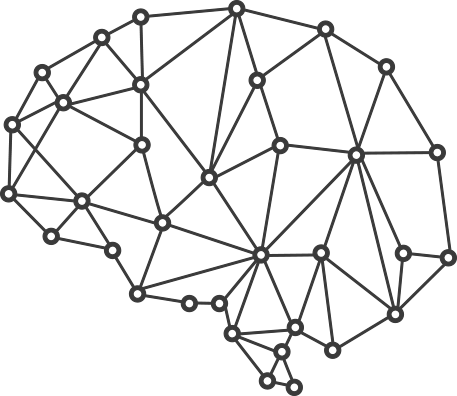Depression is the leading cause of disability in the U.S. for individuals who are between the ages of 15 and 44. While traditional treatments like medication and therapy help many people, some continue to struggle with symptoms that just won’t go away.
For these individuals, alternative treatments like transcranial magnetic stimulation (TMS) and ketamine therapy are gaining attention. How do they compare, and which might be right for you? This guide will explore TMS therapy vs. ketamine treatment, so you’re better informed when it comes to making treatment decisions for your depression.
What is TMS Therapy?
TMS therapy is a breakthrough treatment for depression that works by using gentle magnetic pulses to wake up areas of the brain that help control mood. Unlike medications that work through your bloodstream, TMS targets specific brain regions directly.
During treatment, a small device is placed against your head where it delivers magnetic pulses similar to those used in an MRI. These pulses pass through the skill and stimulate brain cells in regions that may be underactive in people with depression.
What makes TMS stand out is how well it works for people who haven’t found relief through standard treatments. Studies show that about two-thirds of patients see their depression symptoms improve significantly or go away completely.
Additionally, TMS requires no surgery, no anesthesia, and patients stay awake and alert throughout each session.
TMS Side Effects
One reason TMS therapy has become popular is its minimal side effects. Unlike many depression medications, TMS doesn’t cause weight gain, sexual problems, or other side effects that cause many people to stop taking their prescriptions.
Most side effects from TMS are mild and temporary:
- Light headaches that usually go away with over-the-counter pain relievers
- Brief dizziness that usually clears up within a few minutes after treatment
- Mild discomfort where the device touches your scalp
- Some twitching in facial muscles during the procedure
These effects generally become less noticeable after the first few treatments as your body adjusts. Serious side effects are extremely rare. For example, the risk of seizures is less than 1%.
What is Ketamine Treatment?
Ketamine therapy is another option for treating depression. While ketamine has been used as an anesthetic in hospitals, doctors have discovered that it can also ease depression symptoms when given in much smaller doses. Traditional antidepressants can take weeks to start helping; however, ketamine has been shown to provide relief within hours or days.
In 2019, the FDA approved a special form of ketamine called esketamine (Spravato) for adults with treatment-resistant depression (TRD). Esketamine is more potent than regular ketamine, which means it can produce antidepressant effects at lower doses. In 2020, the FDA expanded its approval to include adults with major depression who have suicidal thoughts.
Ketamine Therapy Side Effects
While ketamine can provide fast relief from depression, it does come with more noticeable side effects than TMS therapy. During and shortly after treatment, patients might experience:
- Feeling disconnected from reality or dissociation
- Dizziness or nausea
- Temporary increases in blood pressure
- Faster heart rate
Most side effects go away within a few hours after treatment, but you’ll need someone to drive you home afterward since you shouldn’t operate a vehicle. Your doctor will carefully monitor your response and adjust your treatment plan as needed to minimize discomfort.
Ketamine vs TMS Mechanisms of Action
Both ketamine and TMS effectively treat depression, but they do so in different ways. Understanding how each treatment will affect you can help you and your doctor choose the one that might work best for you.
How Ketamine Works for Depression
Ketamine acts like a reset button for a depressed brain:
- Restores normal brain function and reduces abnormal hyperactivity
- Promotes survival and growth of neurons and supporting brain cells
- Increases stress resilience and normalizes stress hormone levels
- Reduces inflammation in the brain
- Improves function of supporting brain cells called astrocytes
- Blocks excessive glutamate activity that can damage neurons
- Increases BDNF, a natural protein that helps brain cells grow and connect
- Strengthens reward pathways while reducing activity in networks involved in negative thoughts
How TMS Works for Depression
TMS, on the other hand, works more like a retraining program for brain circuits:
- Targets specific brain regions to alter activity in connected networks that regulate mood
- High-frequency TMS excites neurons in the left prefrontal cortex
- Low-frequency TMS calms overactive neurons in the right prefrontal cortex
- Normalizes blood flow patterns that are disrupted in depression
- Decreases blood flow in overactive areas
- Increases activity of important mood-regulating neurotransmitters
- Normalizes stress hormone regulation
- Restores serotonin levels in the prefrontal cortex
- Produces molecular effects similar to other treatments but without their side effects
The Efficacy of Ketamine vs. TMS
Ketamine has gained attention for its rapid action. A study across four clinics in Michigan, Maryland, and Minnesota found that just three ketamine infusions over 11 days led to remission in 52% of participants with severe depression, with another 15% experiencing some improvement. This quick response makes ketamine a valuable option for patients in distress who need fast relief.
TMS therapy has shown equally impressive results, though it typically works more gradually. Research on accelerated TMS protocols shows an 80.2% response rate within the first month of treatment, with about half of patients achieving complete remission from depression symptoms. While TMS takes longer to show its full effect than ketamine, the benefits may last longer as many patients report maintaining improvement long after completing treatment.
Break Free From Depression with Pulse TMS
Even if traditional treatments haven’t worked for you, today’s advanced treatments like TMS and ketamine may be a beacon of hope. At Pulse TMS, we specialize in providing cutting-edge therapies in a comfortable, supportive environment where your well-being is our top priority.
Contact us today to discuss your situation. Our compassionate team is ready to answer your questions and help you determine a treatment plan that works for you.
Sources:
What Youth with Mental Health Needs Should Know – U.S. Department of Labor
Brain stimulation poised to move from last resort to frontline treatment – PNAS
Ketamine treatment for depression: a review – Discover Mental Health
Examining the Benefits of TMS – Psychiatric Times
Ketamine’s promise for severe depression grows, but major questions remain – University of Michigan
Let’s Discuss Treatment Options.



